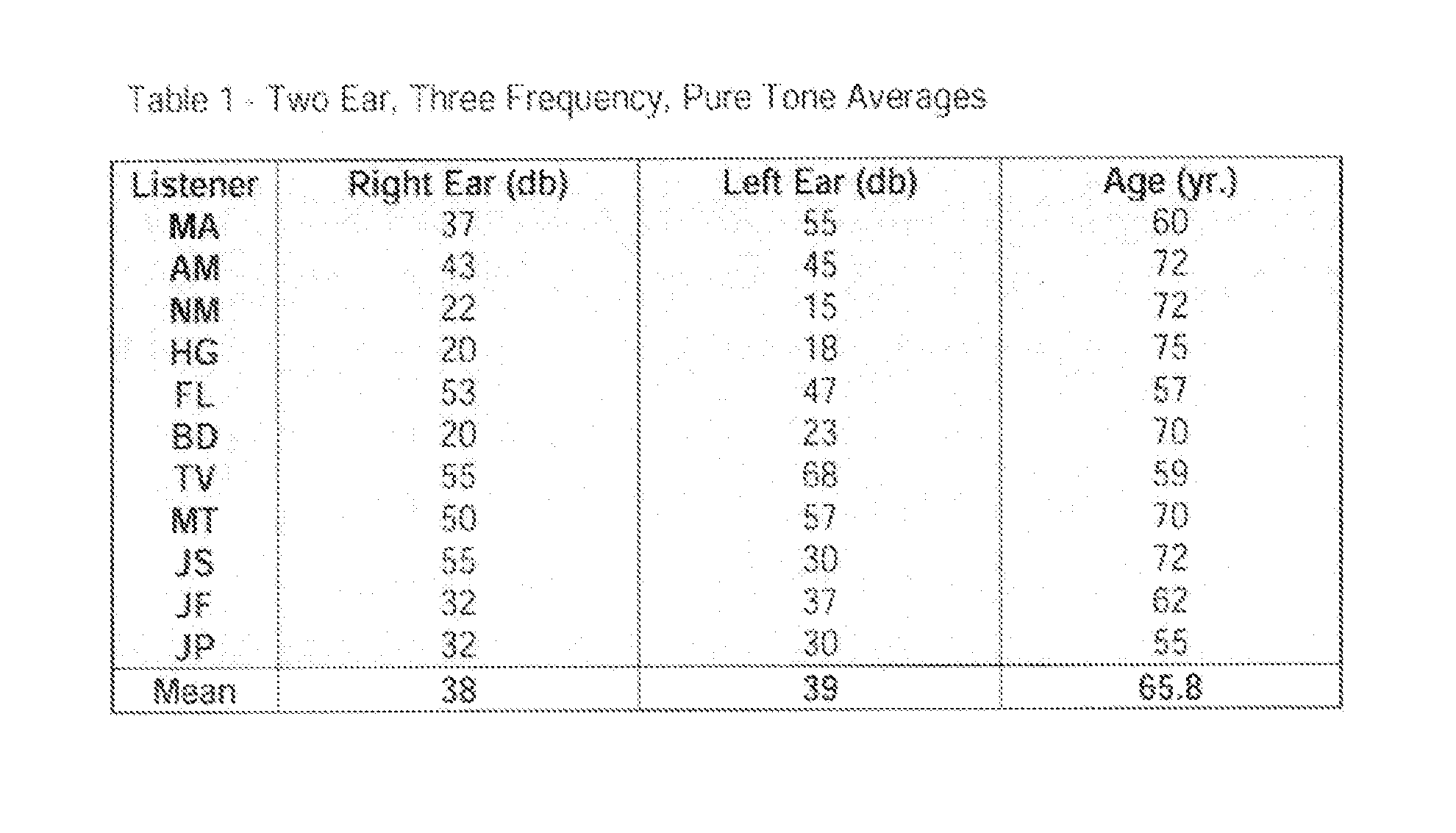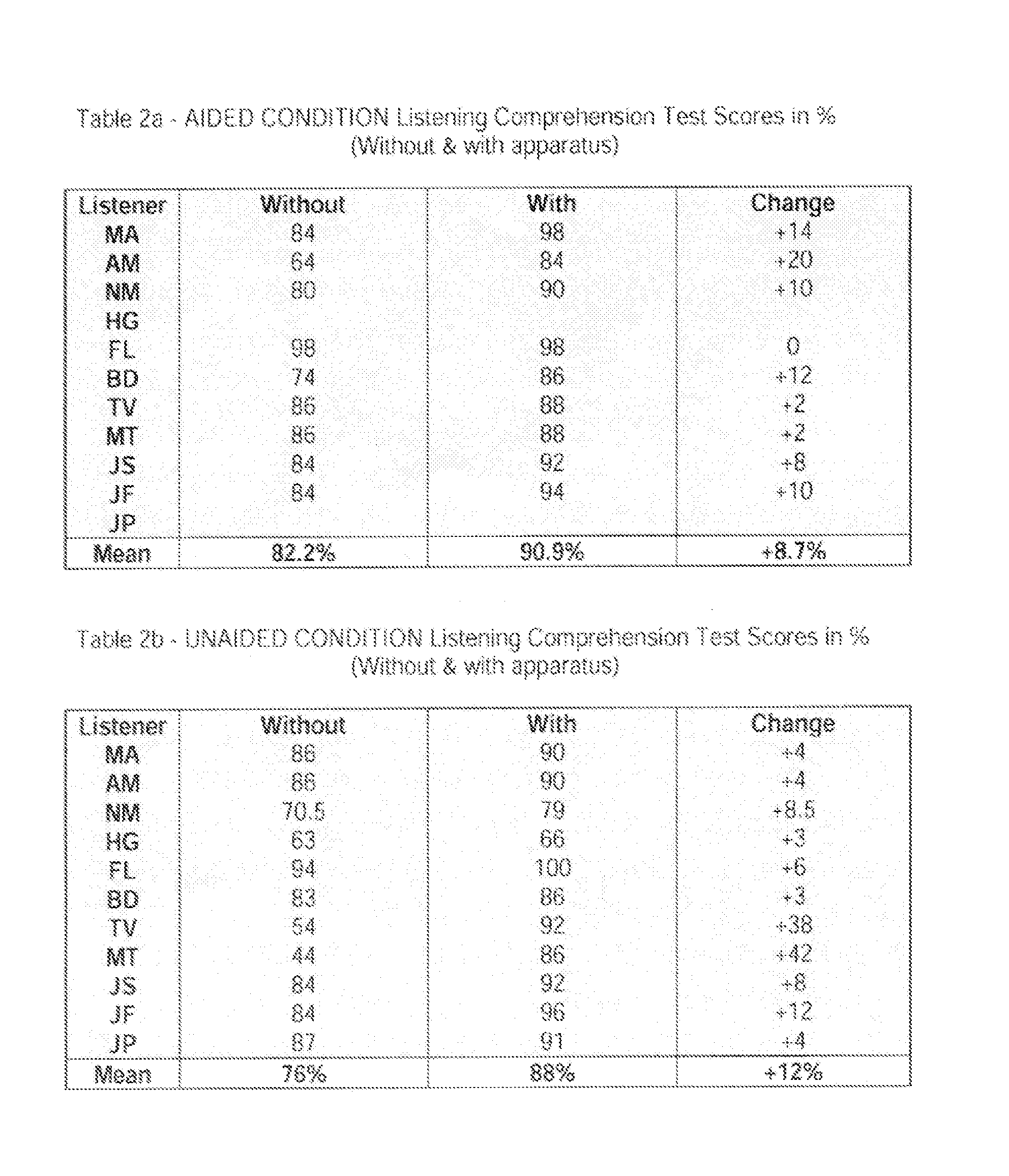Assistive-listening system and method for television, radio & music systems
a technology of listening system and listening device, applied in the field of hearing improvement, can solve the problems of increasing sound intensity, affecting the listening comfort of listeners, and often unintelligible speech of television, radio and music system listeners, so as to improve listener and family member listening room comfort, improve listener comprehension of speech signal, and reduce speech sound reverberation
- Summary
- Abstract
- Description
- Claims
- Application Information
AI Technical Summary
Benefits of technology
Problems solved by technology
Method used
Image
Examples
Embodiment Construction
[0054] The device consists of two parts. Part one is the wireless transmitter, either infrared or FM. The wireless transmitter connects to the television, radio, or music sound source. The connection is best accomplished by hardwire directly to an audio output jack. However, if no audio output jack exists, the wireless transmitter can receive audio input from an accessory microphone, which connects to a transducer (speaker) grill. The wireless transmitter is powered by standard US 115-volt house current. Part two consists of the wireless receiver, amplifier, sound intensity and frequency shaping controls, transducer (speaker), flexible support tubing, and vertical floor stand and power supply. The wireless receiver, amplifier, and sound intensity and frequency shaping controls may be placed in a separate enclosure depending upon speaker enclosure requirements. The transducer (speaker) enclosure should be center positioned as close to the top of the head as possible to maximize the a...
PUM
 Login to view more
Login to view more Abstract
Description
Claims
Application Information
 Login to view more
Login to view more - R&D Engineer
- R&D Manager
- IP Professional
- Industry Leading Data Capabilities
- Powerful AI technology
- Patent DNA Extraction
Browse by: Latest US Patents, China's latest patents, Technical Efficacy Thesaurus, Application Domain, Technology Topic.
© 2024 PatSnap. All rights reserved.Legal|Privacy policy|Modern Slavery Act Transparency Statement|Sitemap



